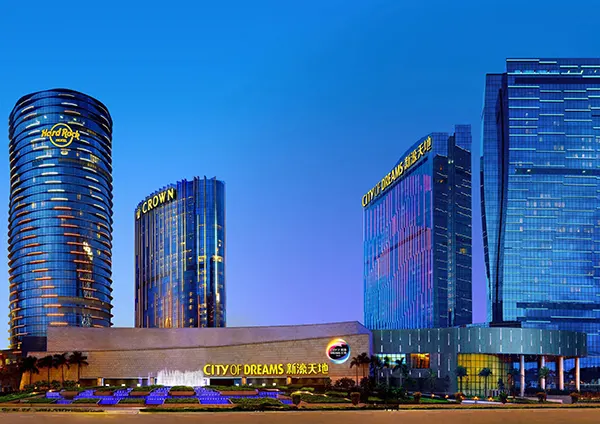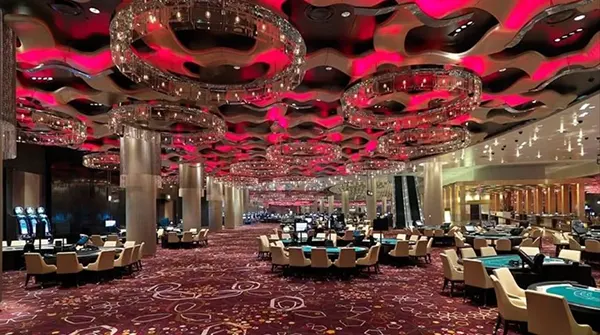City of Dreams Macau: Architectural Grandeur and the Luxury of Design

City of Dreams Macau stands as one of Asia’s most spectacular entertainment complexes, merging visionary architecture, opulent interiors, and cutting-edge gaming innovation. Located in the Cotai district, this integrated resort represents not just a landmark of leisure but a symbol of how architecture and design can profoundly influence the emotions and experiences of every visitor.
The Architectural Vision Behind City of Dreams
The creation of City of Dreams began in the mid-2000s, when Macau sought to redefine itself from a gambling destination into a hub of world-class architecture and luxury tourism. The design concept was entrusted to world-renowned architects who aimed to combine modern fluid forms with bold geometric precision. The resulting complex features four distinct towers, including the Morpheus Hotel — a masterpiece by Zaha Hadid Architects — celebrated for its exoskeletal façade and futuristic fluidity.
The building’s external latticework not only defines its silhouette but also supports the structure, removing the need for internal columns. This innovation allows for vast, open spaces and unique light distribution throughout the interior. As sunlight penetrates the façade, it creates dynamic reflections that shift throughout the day, enhancing the sensory depth of the environment.
Inside, the spatial organisation reflects a philosophy of motion and energy. Walkways curve organically, lighting adapts to the mood of each section, and materials like glass, steel, and marble are combined to communicate both strength and elegance. Every architectural element is designed to immerse visitors in a seamless flow between art, technology, and human experience.
Design as a Catalyst for Emotion
The interior design of City of Dreams aims to evoke a psychological response that blends comfort, anticipation, and awe. Large atriums and cascading water installations guide guests through the resort, while carefully crafted acoustics ensure a soothing yet vibrant atmosphere. Unlike conventional casino halls that emphasise isolation, this complex invites openness and connection.
The visual experience peaks with “The House of Dancing Water,” the resort’s iconic water-based show that merges theatrical design, hydraulics, and acrobatics into a single breathtaking performance. The purpose-built theatre, with its massive water stage and mechanical platforms, demonstrates how architecture and performance can unite to create immersive storytelling environments.
Lighting, aroma, and texture are used deliberately to stimulate emotional engagement. The balance between dimly lit gaming areas and bright public zones maintains the rhythm of excitement and relaxation. This interplay between space and emotion underlines how architecture in entertainment complexes can shape memory and perception.
Gaming Spaces and Technological Innovation
City of Dreams Macau houses an extensive selection of gaming spaces, ranging from traditional tables to electronic slots and exclusive VIP zones. However, what sets it apart is the integration of digital systems and spatial design. Each area is designed for accessibility, comfort, and flow, ensuring that players can navigate the resort intuitively without sensory overload.
VIP areas, such as the Altira and Morpheus clubs, elevate luxury through bespoke furnishings, personalised lighting systems, and private service corridors. These spaces highlight how architecture contributes to the feeling of exclusivity and personal attention. Moreover, the use of smart ventilation, acoustic zoning, and temperature regulation ensures comfort without compromising on style.
Technology also enhances the visitor experience through smart signage, facial recognition for secure access, and contactless payment systems. The blending of advanced systems with modern aesthetics reflects the future of hospitality design, where digital functionality becomes invisible yet indispensable.
Lessons from Global Comparisons
When compared to the world’s renowned casino resorts such as Marina Bay Sands in Singapore or The Bellagio in Las Vegas, City of Dreams Macau distinguishes itself through architectural artistry rather than mere opulence. While many Western counterparts focus on spectacle and size, City of Dreams excels in sophistication, spatial coherence, and cultural symbolism.
Architects and planners studying the resort can extract valuable insights: the importance of spatial rhythm, how natural light affects player psychology, and how non-linear pathways encourage exploration. These lessons can be adapted by other gaming complexes aiming to balance luxury with functionality.
However, some design aspects, such as the high concentration of reflective materials or complex navigation zones, have been critiqued by visitors for causing brief disorientation. These observations provide guidance for future projects — to create spaces that blend artistic ambition with user-friendly orientation.

Art, Culture, and Sustainability in Design
Beyond entertainment, City of Dreams integrates sustainability and art as key design elements. The resort has invested in energy-efficient systems, LED lighting technologies, and advanced water recycling to reduce its environmental footprint. The structure of Morpheus was built with prefabricated steel to minimise construction waste — a pioneering move in luxury architecture.
Art plays a central role in reinforcing the atmosphere of refinement. From large-scale sculptures to digital installations, each element is chosen to evoke cultural narratives and intellectual curiosity. These artworks transform corridors and lounges into curated galleries, elevating the visitor experience beyond recreation.
The future of City of Dreams lies in continuous evolution. As Macau transitions towards a more diversified entertainment destination, the resort stands as a blueprint for how architecture, art, and innovation can define the next generation of global hospitality landmarks.
The Lasting Impact on Visitor Perception
City of Dreams Macau exemplifies how architectural design goes far beyond aesthetics — it orchestrates how people feel, move, and connect within a space. From the rhythm of the interior lighting to the soundscape of its public areas, every sensory detail contributes to a unified emotional journey.
This attention to psychological engagement redefines the standard of resort design. Visitors often leave not just with memories of games or performances, but with an impression of having experienced an architectural composition where every element has purpose and precision.
In 2025, City of Dreams remains a living testament to how human-centred design, cultural sensitivity, and technological mastery can shape the world’s most unforgettable entertainment destinations.
